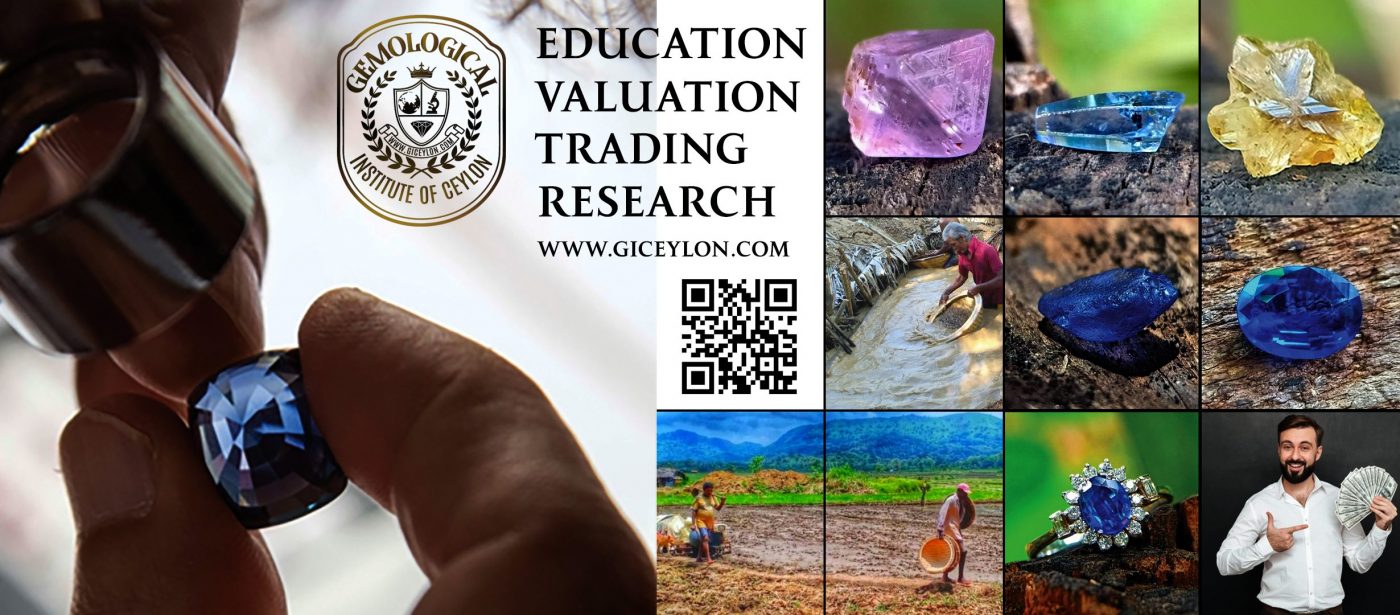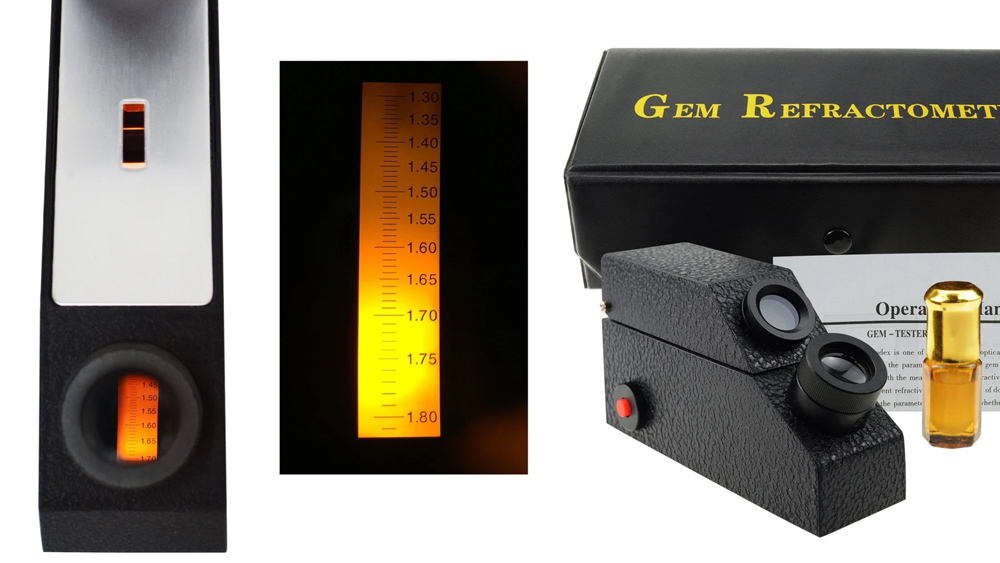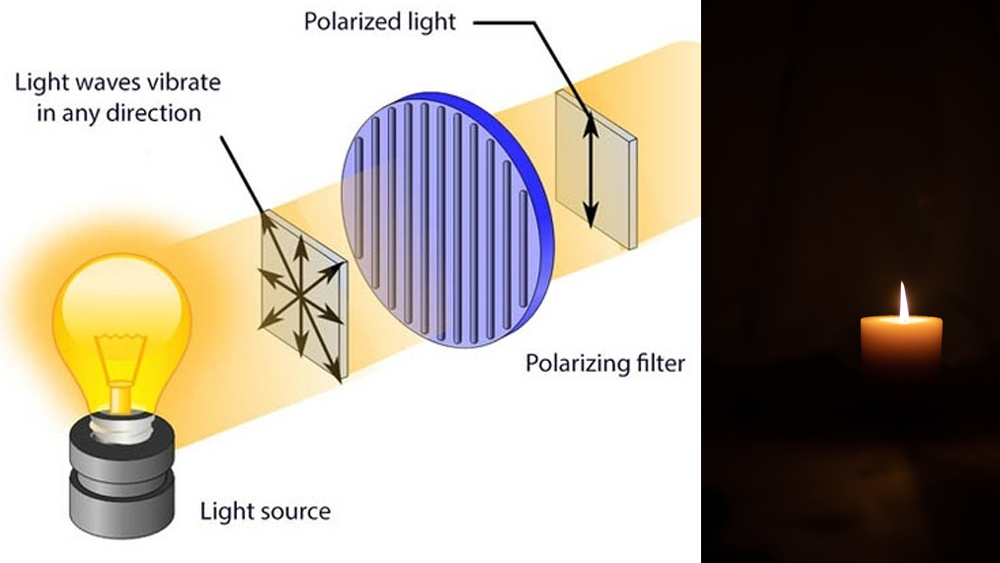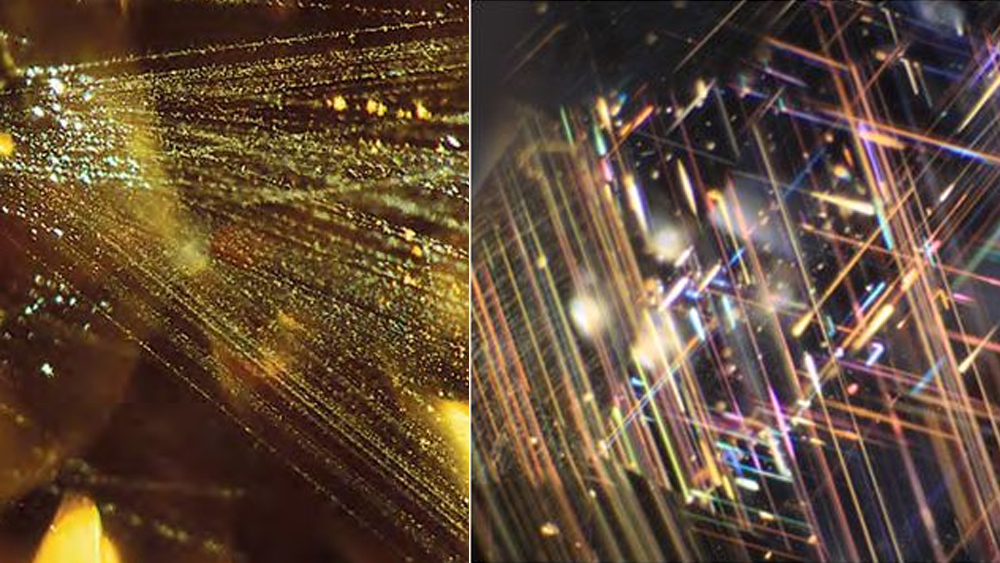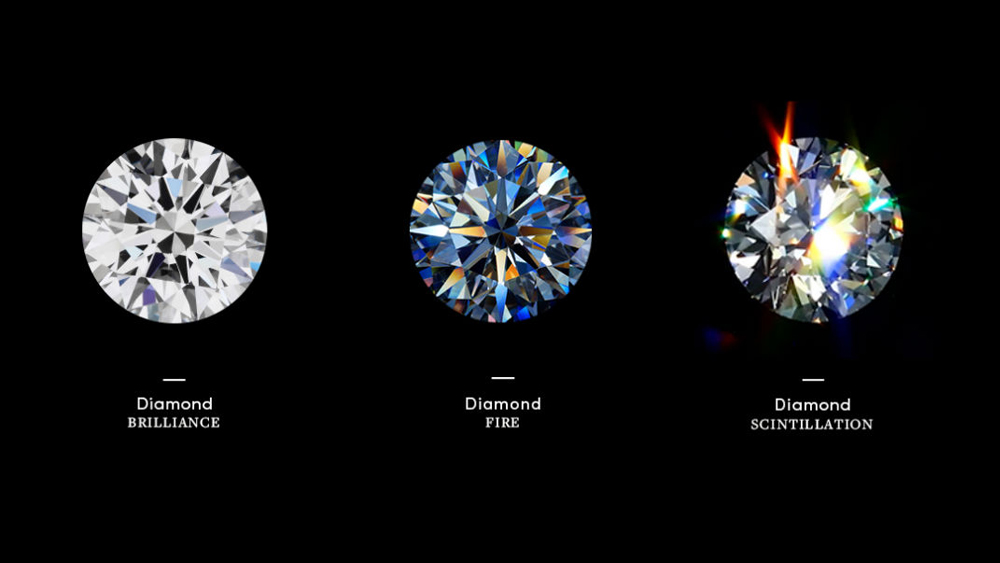Education
Gemstone Optical Properties
Gemstone Optical Properties
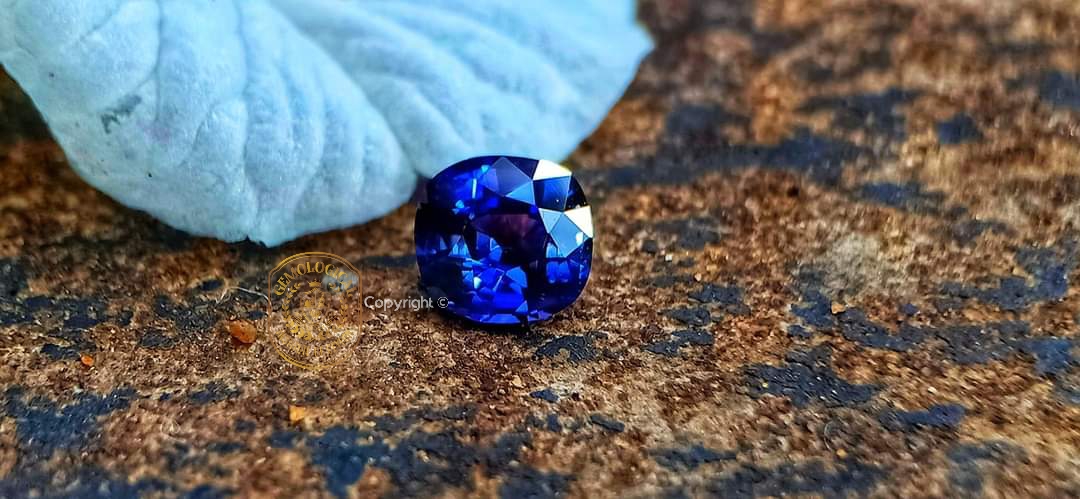
Sometimes we predict that light may be a very simple thing. But light plays a really important role in identifying gemstones. Therefore, we’d like to identify the key principles of light then make it easier to spot a gemstone. It is a really important factor for cutting and polishing a gemstone with optimal brilliance and character.
Properties of light
Electromagnetic energy
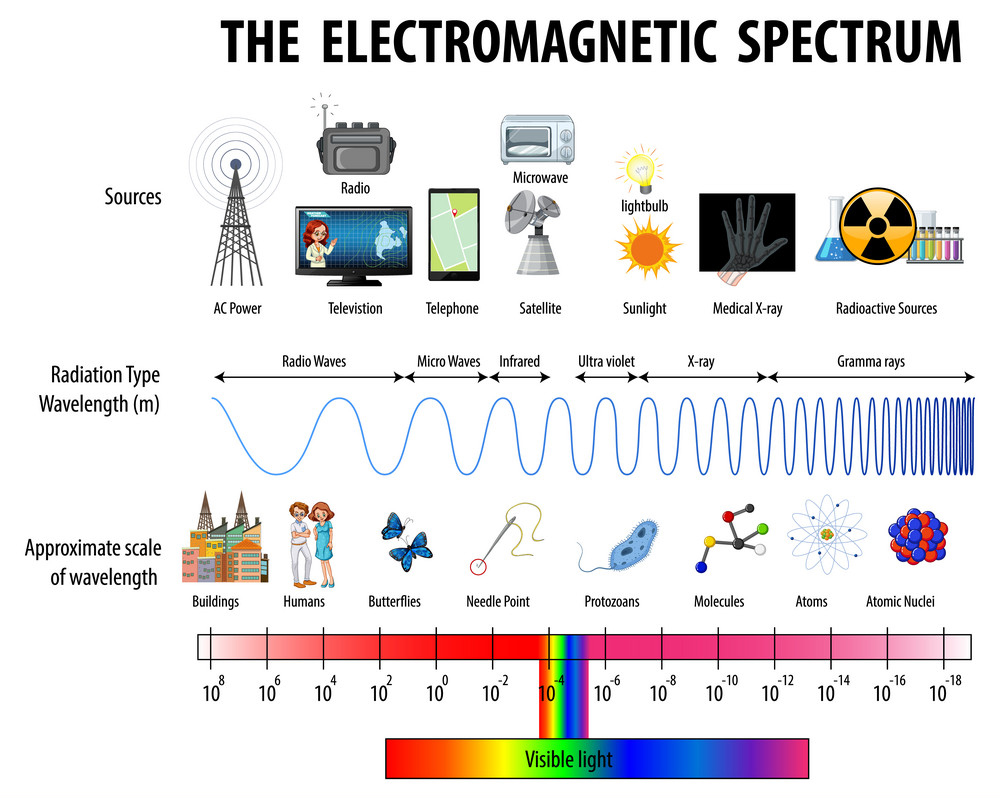 Light is a component of the electromagnetic spectrum, one of the elemental forces of the universe.
Light is a component of the electromagnetic spectrum, one of the elemental forces of the universe.
It is present in significant quantities everywhere. Light energy travels in waves. The energies of the electromagnetic spectrum vary consistently with their wavelengths.
Some are short, some are long. The wavelength has nothing to try and do with the quantity of energy carried. The wavelength determines it.
All wavelengths can have high or low energies. Although in nature, all electromagnetic energy is actually constant, varying wavelengths have distinct characteristics. For example, radio waves and X-rays.
We see a very tiny part of the electromagnetic spectrum as light. In this section, we identify different wavelengths as colors. When we see all the wavelengths right away, we describe it as white light.
The color black is lack electromagnetic energy during this portion of the spectrum. Just beyond the section of the visible electromagnetic spectrum, we discover ultraviolet and infrared.
While humans can’t see these light frequencies some animals can see them. We can feel them, Ultraviolet can give us sunburn, and that we feel infrared as heat. Simply put, light is a form of energy.
One color varies from another by the length of the waves of energy coming at us. Please note, colors are how our brains interpret these wavelengths.
Color has no relevance outside of human experience.
Refraction

Light travels at 186,282 miles per second within the vacuum of space. That’s fast. Although the speed of light doesn’t change perceptibly within the Earth’s atmosphere, it slows when it enters a dense medium like a crystal.
When light passes from one medium to a different one, it slows down and changes direction or bends. The property we call the refractive index (RI) measures what proportion it changes.
In gemology, the refractive index is the relationship between the speed of light in a gem to the speed of light in a vacuum. If a gem has an RI of 1.655, meaning that light travels 1.655 times faster through space than it does through the gem.
Fortunately, gemologists don’t have to be compelled to measure the speed of light. Instead, they measure RI with a refractometer.
The gem is placed on a special surface, and light is gone through it. This casts a shadow on a scale. Where the shadow line falls on the scale marks the RI. Much simpler than attempting to measure the speed of light, right?
Knowing a gem’s RI is one of the foremost important pieces of data you’ll get when identifying a stone. It relates to many of the topics discussed below.
Usually, light disperses evenly in every direction. For example, if you light a candle within the middle of a room, the brightest area is close next to the candle.
The further far away from the candle, the less light there’s.
If you’ll follow one ray of light, you’d see that it spreads equally in every direction because it travels. When light passes through certain substances, it becomes polarized.
That means it’s sideways vibrations at right angles to each other. As normal light, it emanates in every direction. When polarized, light only moves in linear directions (at right angles).
Crystals frequently polarize light, which accounts for a few of the optical phenomena we see. It’s a very important clue for gem identification.
Refractive Index
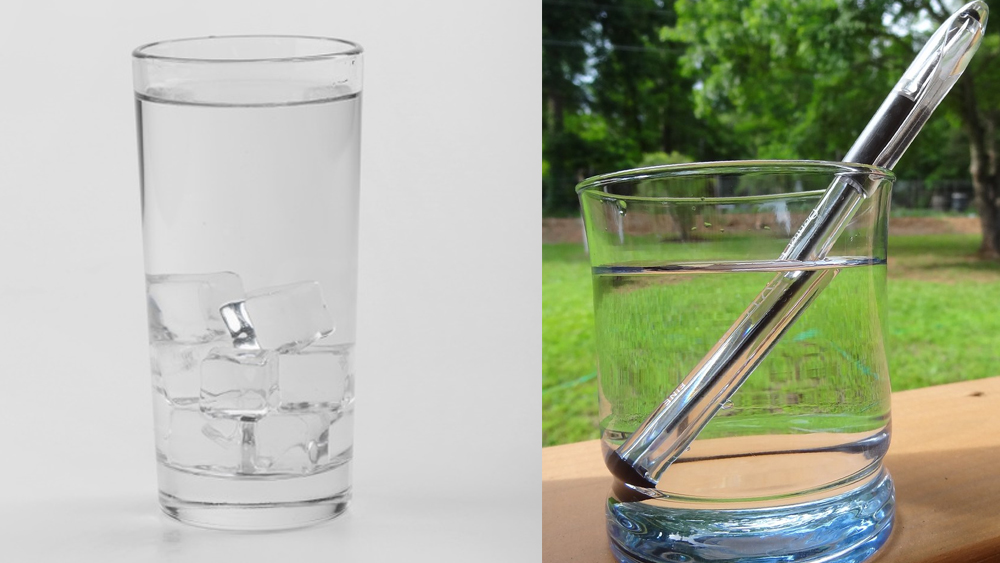
Have you ever noticed how ice cubes in a glass of water nearly disappear? If they have rough surfaces, you will see them, at first. Just like unpolished gems, the rough ice surfaces scatter light in numerous directions.
As the edges of the ice melt and become smooth, the ice cubes become invisible. Just a touch of their outlines, “air bubble inclusions, and cracks remain to inform you the ice is there. Now, we’re stepping into the center of gemology.
Water and ice have an equivalent RI. While we all know that light will bend when it passes from one medium to a distinct one, when both substances have an equivalent RI, speed, and direction don’t change.
No alteration of the speed or direction of sunshine takes place between the water and thus the ice. You can clearly see the air bubbles, though, since they have a distinct index of refraction.
The cracks also disturb or reflect light. They act as mirrors, scattering light. Hence, they show up plainly as they interfere with the free passage of light. We know the technical definition of refractive index: the relationship of the speed of light during a gem to the speed of light in a vacuum.
However, the sensible implications of this have much greater significance for gemology. You’ve surely seen how a straw in a glass of water appears to bend at the surface. The difference in RI between the air and the water causes this.
Understanding how this bending works and so the way much light bends when passing from air to gem is extremely important when cutting gems for brilliance.
Gemstone Inclusions and Refraction
Inside gems, mineral inclusions may act like straws and air bubbles within the water. If the inclusions are transparent, what quantity they stand out relates on to how much their RIs vary from the surrounding material. For example, if an amethyst contains small crystals of clear quartz, those inclusions would be “low relief,” nearly invisible. Clear quartz has an equivalent RI as amethyst. However, if the amethyst contains inclusions of a mineral with a really different RI, they might show up clearly, in “high relief.”
Fractures and Refraction
Fractures in a gem also disrupt the flow of light. Gem cutters must carefully place facets to apply discipline to the internal flow of light. After all, this might increase the “eye appeal” of the gem. Fractures can disrupt this discipline and cause loss of brilliance and scintillation and, thus, reduce the value and desirability of the gem. Filling a fracture with a substance of the same RI as the gem can minimize its light-disruptive effect. Just as light can go through water, ice, and water again without bending, so can it freely go through several layers in a gem. Of course, provided all of them have a similar RI. Oiling and Refraction Gem cutters most typically use oil to fill fractures in gems. Mineral and vegetable oils have RIs near to the lower RI range of gems. Epoxy resins also are used. Filling gem fractures is an ancient and extremely low-tech procedure. Simply place the stones in oil and keep them warm until they absorb the oil. Since emeralds are nearly always fractured, they commonly undergo this procedure. Fracture filling can do wonders for a gem’’s appearance. However, these gems require special care. Subjecting these stones to hot and soapy water can remove the fillings and every one their optical benefits.
Selective Absorption
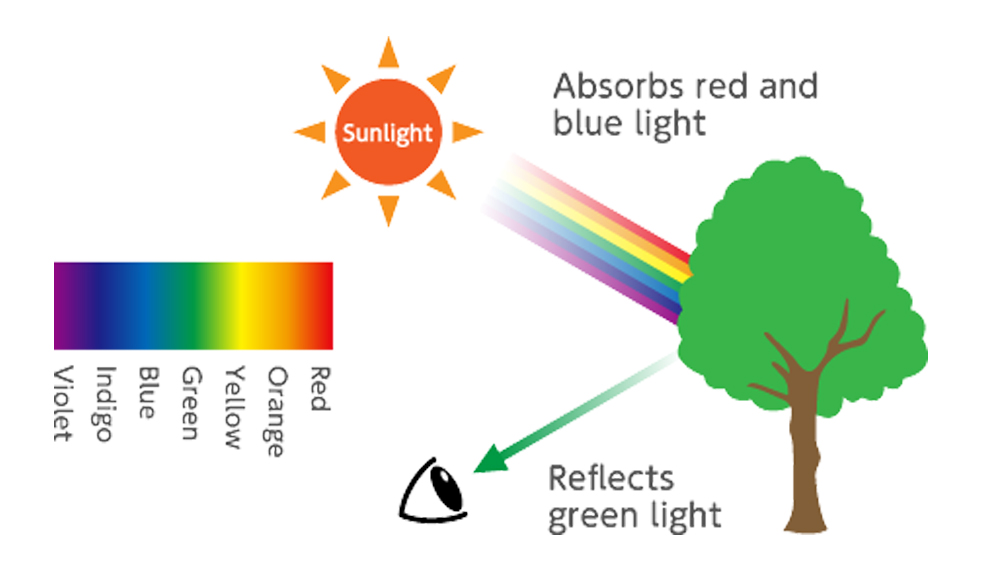 When you see all the wavelengths of visible light directly, you perceive it because of the color white. If you’ll only see some of the color spectrum, you perceive a hue. However, the physics of light is a bit more complex. If you were to get rid of just a small amount of the white light spectrum, there would be amounts of several different hues left. When this happens, our eyes average the wavelengths together. We perceive these partial spectrums as one hue, although there are several wavelengths of light coming at us directly. When light enters a crystal, it absorbs some of the light. Thus, the light exiting the crystal isn’t any longer white. Instead, we see a hue. This process is named selective absorption. How Does Color from Selective Absorption Differ From Pigment? We add pigments to materials to provide or change colors, like dye to your clothes or food coloring to the icing. Selective absorption adds nothing to a crystal. Most crystals themselves are colorless. Only the light passing through them, the color we see, changes. For example, a streak test on most gems, like a natural emerald, will leave a colorless streak. Selective absorption produces that emerald green color, not pigments within the gem. Only a couple of gems will show a streak aside from colorless or white. Streaks show the color of a gem without selective absorption live. Therefore, it’s not one among the gemstone optical properties.
When you see all the wavelengths of visible light directly, you perceive it because of the color white. If you’ll only see some of the color spectrum, you perceive a hue. However, the physics of light is a bit more complex. If you were to get rid of just a small amount of the white light spectrum, there would be amounts of several different hues left. When this happens, our eyes average the wavelengths together. We perceive these partial spectrums as one hue, although there are several wavelengths of light coming at us directly. When light enters a crystal, it absorbs some of the light. Thus, the light exiting the crystal isn’t any longer white. Instead, we see a hue. This process is named selective absorption. How Does Color from Selective Absorption Differ From Pigment? We add pigments to materials to provide or change colors, like dye to your clothes or food coloring to the icing. Selective absorption adds nothing to a crystal. Most crystals themselves are colorless. Only the light passing through them, the color we see, changes. For example, a streak test on most gems, like a natural emerald, will leave a colorless streak. Selective absorption produces that emerald green color, not pigments within the gem. Only a couple of gems will show a streak aside from colorless or white. Streaks show the color of a gem without selective absorption live. Therefore, it’s not one among the gemstone optical properties.
The Spectroscope
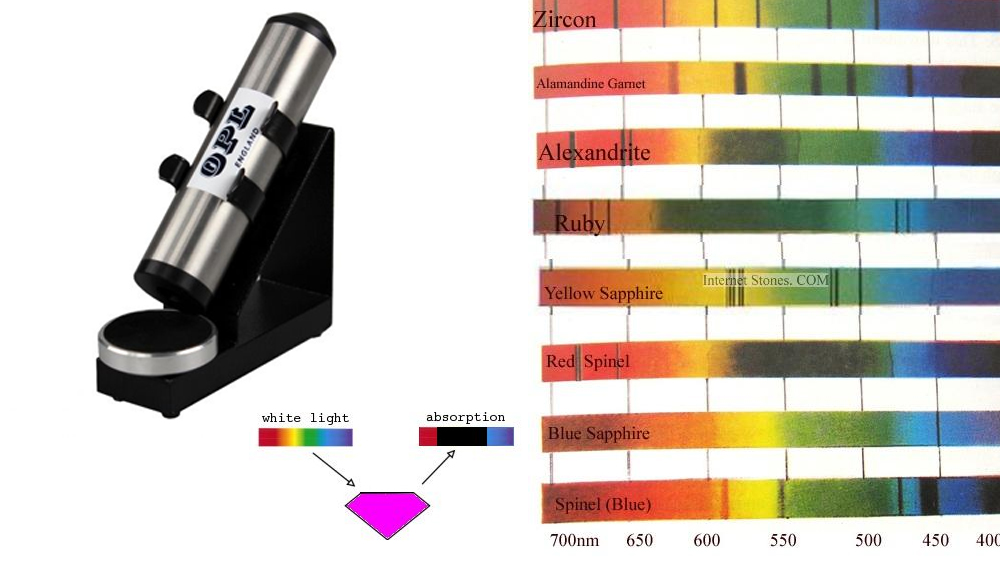 We can see the spectrum of light with an instrument called a spectroscope. It separates white light by wavelength. If you inspect sunlight through a spectroscope, you’d see all the colours of the rainbow nicely displayed. However, if you inspect the light coming out of a coloured gemstone, you’d see dark lines here and there. These are the areas of selective absorption. Selective absorption patterns are sometimes diagnostic. Thus, you’ll use them sometimes to differentiate one gem from another. To the right, you will see the absorption spectra of white light, ruby, and garnet as viewed through a spectroscope. white light has no dark lines. When held in your hand, rubies and garnets look very similar. Their spectrums vary considerably. While the garnet spectrum has just a few lines, the ruby spectrum has large areas of absorption also as several distinct lines. Although the spectroscope may be an important tool for gem identification, it does have limitations. Several gems share patterns. Take gems colored by the element chromium. The presence of chromium creates identical or very similar absorption patterns, whether it’s in a ruby, tourmaline, diopside, or other minerals. On some occasions, a spectroscope can make a critical distinction. Generally speaking, however, you’ll get more useful information from other instruments.
We can see the spectrum of light with an instrument called a spectroscope. It separates white light by wavelength. If you inspect sunlight through a spectroscope, you’d see all the colours of the rainbow nicely displayed. However, if you inspect the light coming out of a coloured gemstone, you’d see dark lines here and there. These are the areas of selective absorption. Selective absorption patterns are sometimes diagnostic. Thus, you’ll use them sometimes to differentiate one gem from another. To the right, you will see the absorption spectra of white light, ruby, and garnet as viewed through a spectroscope. white light has no dark lines. When held in your hand, rubies and garnets look very similar. Their spectrums vary considerably. While the garnet spectrum has just a few lines, the ruby spectrum has large areas of absorption also as several distinct lines. Although the spectroscope may be an important tool for gem identification, it does have limitations. Several gems share patterns. Take gems colored by the element chromium. The presence of chromium creates identical or very similar absorption patterns, whether it’s in a ruby, tourmaline, diopside, or other minerals. On some occasions, a spectroscope can make a critical distinction. Generally speaking, however, you’ll get more useful information from other instruments.
Color Change
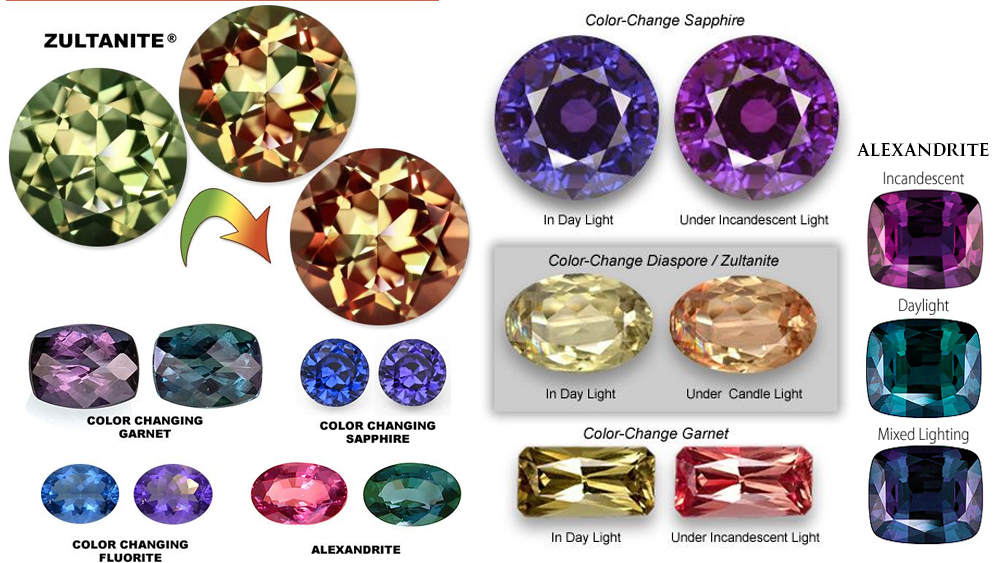 While sunlight contains all the visible wavelengths of electromagnetic energy, other varieties of light don’t. They have peaks and valleys, rather than an even distribution of electromagnetic energy. For example, our electric lights appear white, but that’s a result of our eyes averaging the wavelengths together. The hues we usually see in gems depend on having a full spectrum of white light present. If you’ve got but that entering the gem, what comes out could even be different. This is why some gems, like alexandrite, change color between natural and artificial light. Some gemstones also can change colors when viewed in several varieties of artificial light.
While sunlight contains all the visible wavelengths of electromagnetic energy, other varieties of light don’t. They have peaks and valleys, rather than an even distribution of electromagnetic energy. For example, our electric lights appear white, but that’s a result of our eyes averaging the wavelengths together. The hues we usually see in gems depend on having a full spectrum of white light present. If you’ve got but that entering the gem, what comes out could even be different. This is why some gems, like alexandrite, change color between natural and artificial light. Some gemstones also can change colors when viewed in several varieties of artificial light.
Critical Angle
 If you’ve ever spent a day at a lake, you’ve probably noticed a refraction effect called the critical angle. During the day, sunlight passes into the lake. However, for an instant just before sunset, the light reflects off the water rather than passing into it. Looking within the direction of the sun becomes difficult due to the glare. Whether sunlight passes into the water or reflects off depends on the angle at which it hits the water. When the light reaches the critical angle, the surface reflects it. The critical angle effect occurs with gemstones, too, and affects gem faceting specifically. If you haven’t already experienced this, please do this little experiment. While facing the sun, inspect quartz. Turn it this way which to examine the maximum amount of the inside as you can. Most of the time, you’re looking all the way through the crystal. Once in a while, though, one among the sides will act as a mirror and reflect the sun towards your eyes. What happens when the light reaches the critical angle in your field of view.
If you’ve ever spent a day at a lake, you’ve probably noticed a refraction effect called the critical angle. During the day, sunlight passes into the lake. However, for an instant just before sunset, the light reflects off the water rather than passing into it. Looking within the direction of the sun becomes difficult due to the glare. Whether sunlight passes into the water or reflects off depends on the angle at which it hits the water. When the light reaches the critical angle, the surface reflects it. The critical angle effect occurs with gemstones, too, and affects gem faceting specifically. If you haven’t already experienced this, please do this little experiment. While facing the sun, inspect quartz. Turn it this way which to examine the maximum amount of the inside as you can. Most of the time, you’re looking all the way through the crystal. Once in a while, though, one among the sides will act as a mirror and reflect the sun towards your eyes. What happens when the light reaches the critical angle in your field of view.
Brilliance
Gem cutters must understand critical angles to bring out maximum brilliance in their cuts. A gem’s brilliance, in essence, is that the light that’s reflected off the bottom or pavilion facets back towards the viewer’s eye. From the above examples, you must understand that the connection of the light to the bottom facets is below the gem’s critical angle. In theory, the higher the RI, the greater the potential brilliance of the gemstone. However, really, brilliance involves numerous other factors that rarely have any practical value. For example, a gem not cut to ideal proportions or not polished well will have significantly less brilliance. Yet another factor is color saturation. The deeper the gem color, the more light is absorbed. Thus, the brilliance suffers. Try this experiment. Get yourself some well-cut and polished quartz and aquamarine gems. (Cut plays a big role in a gem’s brilliance). Quartz and aquamarine have very low RI’s. On the opposite hand, diamond has one among the highest. Carry your well-cut quartz or aquamarine around with you. you’ll find they need more brilliance than some of the diamonds you’ll see!
Scintillation
Windowing
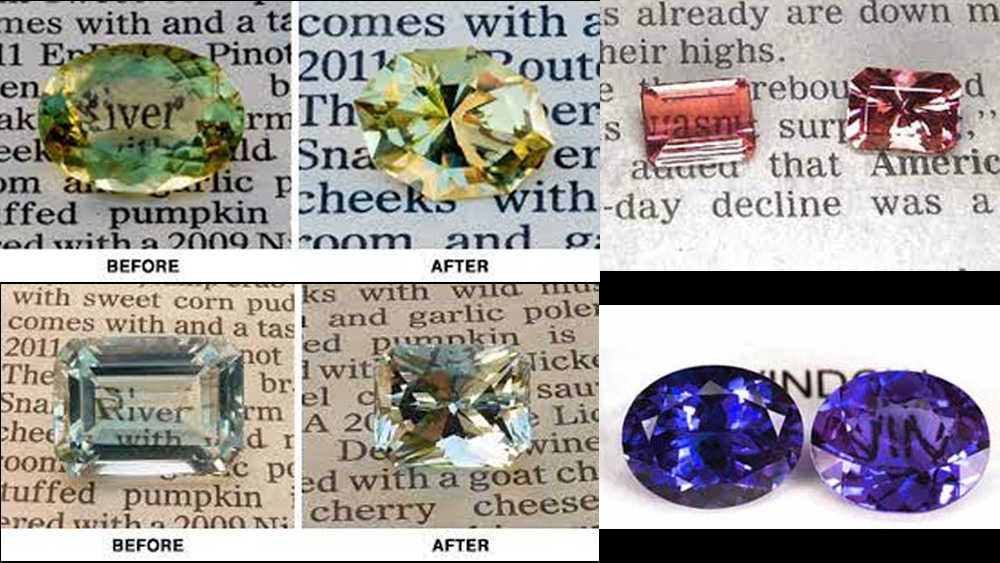 Recall exploring through a quartz to seek out the critical angle? you’ll also see another optical phenomenon during that test. Windowing is once you can look straight through the crystal, without light reflecting off a side. Economics has more to try and do with gem cutting than aesthetics. That’s just a fact of life. Lapidaries cut most gems to achieve maximum size when finished, instead of maximum beauty. Now, that always requires cutting the pavilion facets at angles well off the critical angle. When this happens, you’ll see windowing within the finished gem. With the gem face up, you’ll see the deepest color and scintillation around the edges. However, you’ll look throughout the middle, the windowing area. Here, no light is reflected back, hence no sparkle, and the color is far lighter. If you’re unfamiliar with windowing, take the time to look for it. Once you see it, this effect becomes quite obvious. Small windows are common and have little effect on a gem’s beauty. Large windows, however, mar the looks of a gem significantly. Customers will take that into consideration when looking to form a sale.
Recall exploring through a quartz to seek out the critical angle? you’ll also see another optical phenomenon during that test. Windowing is once you can look straight through the crystal, without light reflecting off a side. Economics has more to try and do with gem cutting than aesthetics. That’s just a fact of life. Lapidaries cut most gems to achieve maximum size when finished, instead of maximum beauty. Now, that always requires cutting the pavilion facets at angles well off the critical angle. When this happens, you’ll see windowing within the finished gem. With the gem face up, you’ll see the deepest color and scintillation around the edges. However, you’ll look throughout the middle, the windowing area. Here, no light is reflected back, hence no sparkle, and the color is far lighter. If you’re unfamiliar with windowing, take the time to look for it. Once you see it, this effect becomes quite obvious. Small windows are common and have little effect on a gem’s beauty. Large windows, however, mar the looks of a gem significantly. Customers will take that into consideration when looking to form a sale.
Double Refraction and Birefringence
When light enters a gem, it’s refracted. If the light faces no restrictions aside from slowing down, gemologists call the gem isotropic. In isotropic materials, light passes every direction at the same speed and with the same color. This occurs in amorphous materials like glass, plastic, opal, and amber, also as minerals that form within the cubic system. These materials have one RI and one color. In the other five crystal systems, light becomes polarized. Thus, it vibrates in two or three planes. Each direction of light features a different speed and RI. This is called double refraction. Birefringence is the difference between the refractive indices of a gem. For example, if a stone features a high RI of 1.623 and another side RI of 1.617, the birefringence is 0.006. While some gems have three angles of refraction, measuring all three RIs during a faceted gem is difficult. So, simply measuring the range between the high and low RI suffices, rather than distinguishing all three. Thus, gemologists call all gems, aside from those within the cubic system or amorphous, doubly refractive. Each angle of refraction can have a different color. (Of course, colorless gems are the exception, since they don’t have multiple hues). Few gems show three colors, so this is often where the third refraction angle becomes important. (I’ll cover this in more detail under “Pleochroism”). Gemologists call stones with double refraction anisotropic. That means an unequal distribution of gemstone optical properties in a crystal. The term anisotropic also applies to physical properties, like minerals that vary in hardness.
Doubling
In most doubly refractive gems, the difference between RIs is so small you can’t see it. You can still measure the difference with a refractometer. However, some gems have such an excellent difference between RIs it causes doubling or multiple images. For example, calcite features a birefringence of 0.172 and shows extreme doubling. 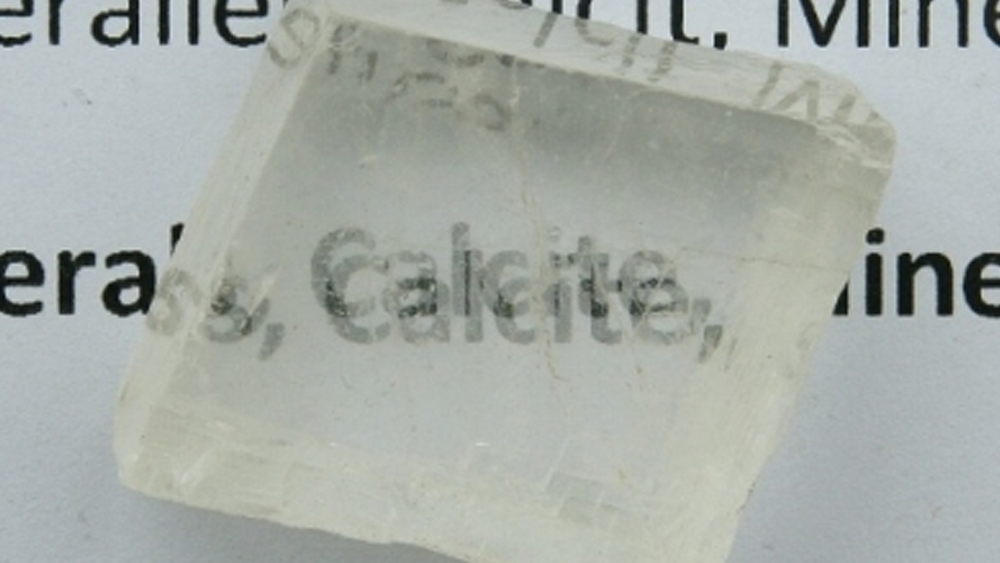 High birefringence is common in a few other gems, notably tourmaline and zircon. When looking into them, you’ll see a doubling of the back facets. This tells you immediately that you have a gem with high birefringence. Since this isn’t an optical property many gems possess, it’s an important clue for gem identification. However, not seeing strong doubling doesn’t mean a gem has low birefringence. If you’re looking straight down a gem’s C axis, you’ll see only single refraction. Sometimes, you’ll need to look around aside to check the doubling.
High birefringence is common in a few other gems, notably tourmaline and zircon. When looking into them, you’ll see a doubling of the back facets. This tells you immediately that you have a gem with high birefringence. Since this isn’t an optical property many gems possess, it’s an important clue for gem identification. However, not seeing strong doubling doesn’t mean a gem has low birefringence. If you’re looking straight down a gem’s C axis, you’ll see only single refraction. Sometimes, you’ll need to look around aside to check the doubling.
Crystal Habits and Refraction
A quick review of crystal habits will help explain why some crystals are singly, doubly, or triply refractive. Amorphous Amorphous materials haven’t any crystal structure or habit. they have one refractive index and one color. Isometric Because of the equality of the axes, minerals within the isometric or cubic system are singly refractive. Tetragonal Tetragonal minerals, and therefore the gems cut from them, will have double refraction. Light passing through the C axis are going to be refracted at a distinct speed than that on the shorter axes. If colored, tetragonal gems also will vary in hue. Obviously, colorless crystals won’t show two hues. Hexagonal In the hexagonal system, the light will refract at two speeds, one on the optic axis and another on the shorter, but equal length axes. If the gem is colored, the 2 directions will show at least slightly different hues. Orthorhombic In the orthorhombic system, although all the axes meet at 90° they all have different lengths. Hence, all three optic axes will refract the light at a different speed. Orthorhombic gems can potentially show three different colors. Monoclinic In the monoclinic system, all three axes are different lengths but only two meet at 90°. Thus, each optic axis will refract the light at a distinct speed. Each can potentially have a different hue. Triclinic In the triclinic system, none of the axes have an equivalent length nor meet at 90°. Again, each optic axis will refract the light at a different speed and each can display a different hue. Summary Only amorphous materials or minerals within the isometric system have one refractive index. they have a uniform color. Minerals within the tetragonal and therefore the hexagonal system has double refraction. They can also show two different colors. The other crystal systems, orthorhombic, monoclinic, and triclinic, have three unequal optic axes. Each will have a different angle of refraction and potentially three different colors.
Pleochroism
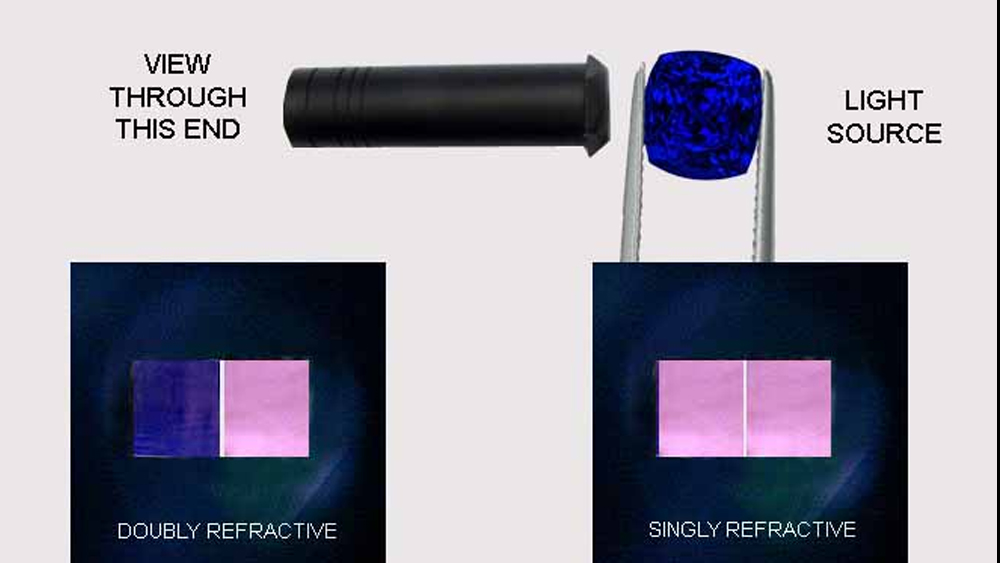 Pleochroism means showing multiple colors and results form birefringence. You’ll also encounter the term dichroism, which means two colors, or trichroism, which means three colors. Just as RI varies by the optic axis, so does the color in many occasions. Often, the colour difference is so slight you’ll need a dichroscope to examine it. For example, see the image to the right. With other gems, the difference is so extreme you’ll see both colors at the same time. Andalusite, with its green and orange pleochroism, is a superb example. You’ll also find extreme pleochroism in tourmaline and iolite. If properly cut, iolite displays blue to violet face, but pale yellow or colorless from the sides. (Be aware, iolite’s other properties come close to amethyst. The two are easily confused. However, a fast check out the gem from the side will distinguish it).
Pleochroism means showing multiple colors and results form birefringence. You’ll also encounter the term dichroism, which means two colors, or trichroism, which means three colors. Just as RI varies by the optic axis, so does the color in many occasions. Often, the colour difference is so slight you’ll need a dichroscope to examine it. For example, see the image to the right. With other gems, the difference is so extreme you’ll see both colors at the same time. Andalusite, with its green and orange pleochroism, is a superb example. You’ll also find extreme pleochroism in tourmaline and iolite. If properly cut, iolite displays blue to violet face, but pale yellow or colorless from the sides. (Be aware, iolite’s other properties come close to amethyst. The two are easily confused. However, a fast check out the gem from the side will distinguish it). 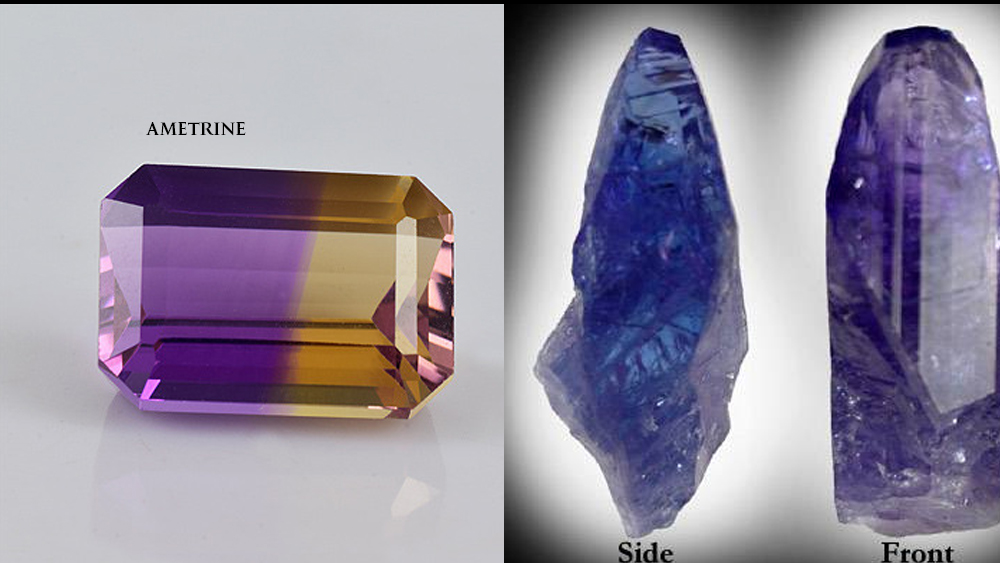 Don’t confuse pleochroism with color zoning. Some stones, just like the ametrine pictured to the left, may have separate areas of color on an equivalent optic axis. This is entirely different from pleochroism.
Don’t confuse pleochroism with color zoning. Some stones, just like the ametrine pictured to the left, may have separate areas of color on an equivalent optic axis. This is entirely different from pleochroism.
Dispersion
Gemstone dispersion is that the spreading of white light into its component colors. once you see a rainbow coming out of a prism, you’re viewing dispersion. The fire of a diamond is another example. Although common to most gems, dispersion is rarely strong enough to be easily seen. Dispersion is easy to confuse with birefringence. With dispersion, each wavelength of light is refracted slightly differently. However, this has nothing to try to do with the gem’s optic axis. Diamonds, which crystallize within the cubic system and are singly refractive, have high dispersion. Dispersion is often a very important piece of information for gem identification. You’ll rarely see dispersion under 0.020, and that would be weak. So, if you see noticeable dispersion during a gem, you’d eliminate quartz (0.009), sapphire (0.018), and most other gems as candidates. The amount of fire, or dispersion, you see from a gem depends to an excellent extent on cut. The pavilion angles determine what proportion of light is reflected back to the top. On the crown, high angles emphasize dispersion, whereas low angles or a skinny crown will show considerably less. This explains why some diamonds appear to have far more fire than others. All diamonds have equivalent gemstone optical properties, including an equivalent dispersion. However, they don’t display it equally. When you become conversant in what proportion dispersion a well-cut diamond will display, you’ll use that to differentiate it from CZs. Diamonds have a dispersion of 0.044, very high within the world of gems. However, CZs have a way higher dispersion at 0.060. When you know what you’re trying to find, you’ll see it from a distance.
Luster
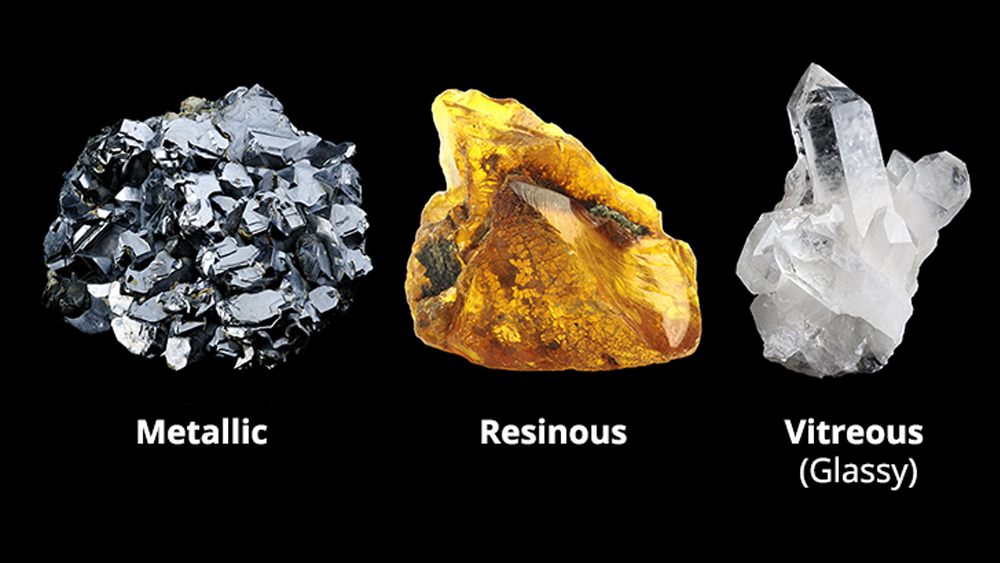
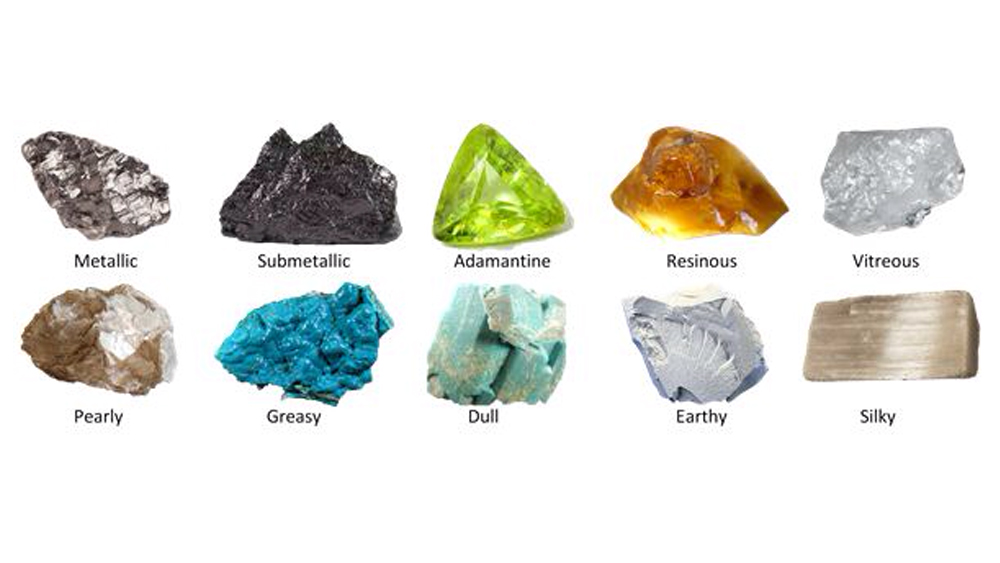 Gemstone luster is what proportion light is reflected off a smooth surface. This includes light from the pavilion facets as well as the surface. Diamonds have the very best luster of all gemstones: adamantine. In fact, adamantine literally means “diamond-like.” Gems like rubies and sapphires have sub-adamantine luster. Most transparent gems you’ll encounter will have vitreous or “glass-like” luster. Since photos don’t always capture luster well, you would like to examine some well-cut diamonds and colored stones to check the differences. Nevertheless, the image below will offer you some idea of the difference between a diamond with an adamantine luster (center) and vitreous colored stones (left and right).
Gemstone luster is what proportion light is reflected off a smooth surface. This includes light from the pavilion facets as well as the surface. Diamonds have the very best luster of all gemstones: adamantine. In fact, adamantine literally means “diamond-like.” Gems like rubies and sapphires have sub-adamantine luster. Most transparent gems you’ll encounter will have vitreous or “glass-like” luster. Since photos don’t always capture luster well, you would like to examine some well-cut diamonds and colored stones to check the differences. Nevertheless, the image below will offer you some idea of the difference between a diamond with an adamantine luster (center) and vitreous colored stones (left and right). 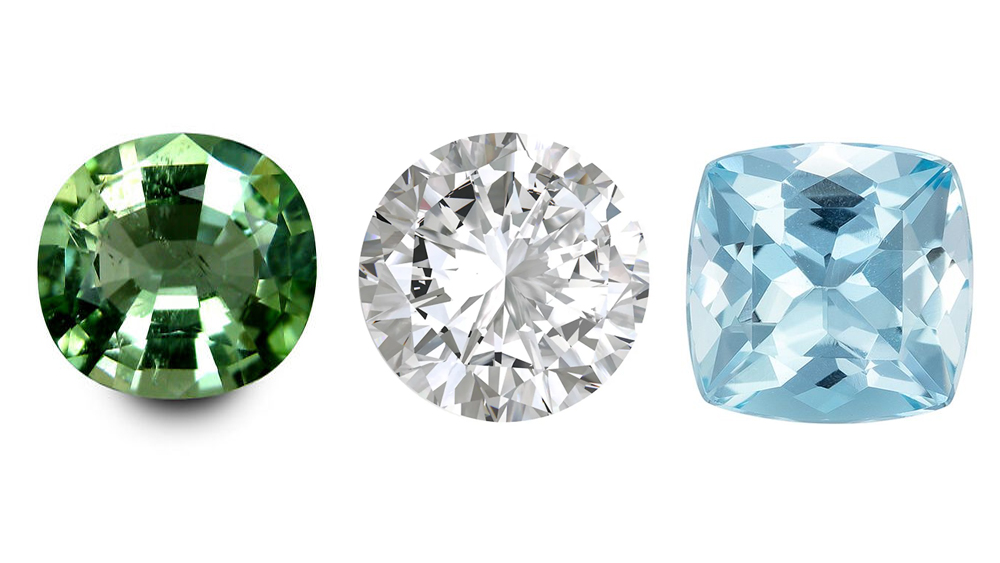 Other sorts of luster include dull, metallic, pearly, silky, waxy, resinous, and greasy. Although the terms are somewhat subjective, they’re just about self-explanatory. Amber is typically resinous. Hematite is metallic. Charoite and coral are waxy. Also, gems can display more than one type of luster. for instance , some stones are often either sub-adamantine or vitreous. Chalcedony is typically vitreous but also can be greasy. Opal is typically vitreous but are often resinous. Some gems can display different lusters supported the orientation of its optical axis. Remember, consider the standard of lapidary work when assessing luster. Just because a stone shows a dull luster doesn’t necessarily mean that’s an actual property of the gem itself. It could just lack a decent polish. Conversely, stones like amber are often taken to a vitreous level of polish.
Other sorts of luster include dull, metallic, pearly, silky, waxy, resinous, and greasy. Although the terms are somewhat subjective, they’re just about self-explanatory. Amber is typically resinous. Hematite is metallic. Charoite and coral are waxy. Also, gems can display more than one type of luster. for instance , some stones are often either sub-adamantine or vitreous. Chalcedony is typically vitreous but also can be greasy. Opal is typically vitreous but are often resinous. Some gems can display different lusters supported the orientation of its optical axis. Remember, consider the standard of lapidary work when assessing luster. Just because a stone shows a dull luster doesn’t necessarily mean that’s an actual property of the gem itself. It could just lack a decent polish. Conversely, stones like amber are often taken to a vitreous level of polish.
Optic Character
Although polarization splits light in two directions, not all the individual beams are polarized. Gems in the hexagonal and tetragonal systems only polarize light in one direction. The light passing down the optic axis remains unpolarized. This is the definition of a uniaxial gem. Sapphire, quartz, tourmaline, and zircon are common examples of uniaxial gems. Other doubly refractive gems have two optic axes, both of which are polarized. They are called biaxial gems. Since this occurs with all minerals in the orthorhombic, monoclinic, and triclinic systems, they’re more common. You can see a biaxial optic sign in the photo to the right. 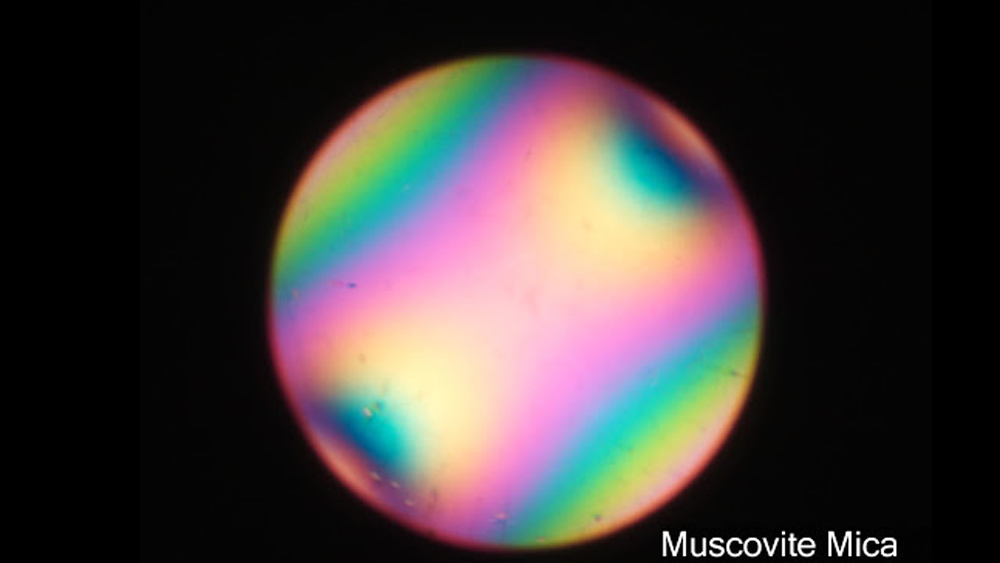 Gemologists also distinguish optic signs as positive, negative, or without signs.
Gemologists also distinguish optic signs as positive, negative, or without signs.
Fluorescence
The molecular structure of a crystal changes the energy that comes into it. We’ve seen that with selective absorption. This also happens with the invisible portion of the electromagnetic spectrum. In particular, if you place ultraviolet energy (UV) into a gem, some of it may change into visible light. this is often called fluorescence. 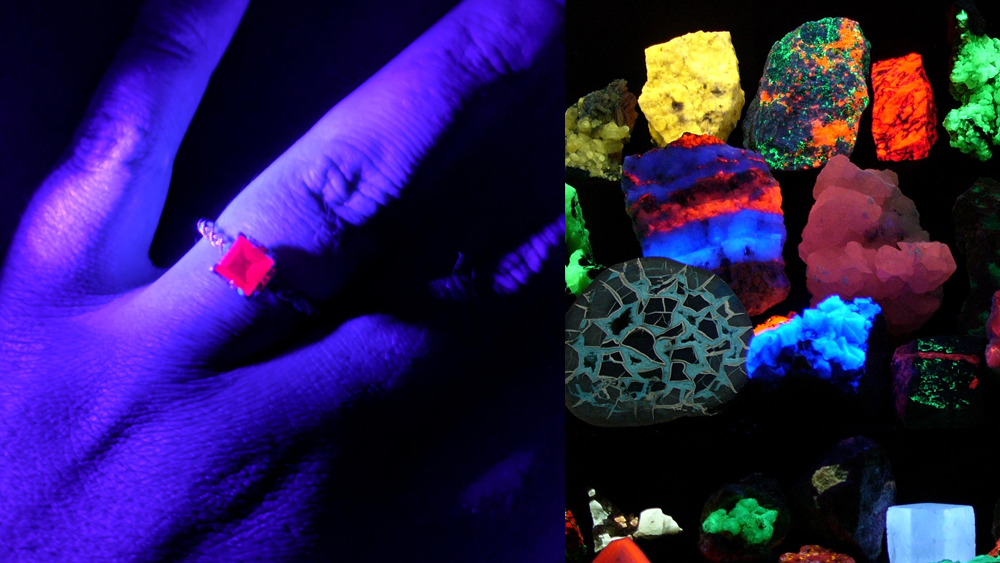 Some gems will continue to emit visible light after the UV is turned off. This is called phosphorescence.
Some gems will continue to emit visible light after the UV is turned off. This is called phosphorescence. 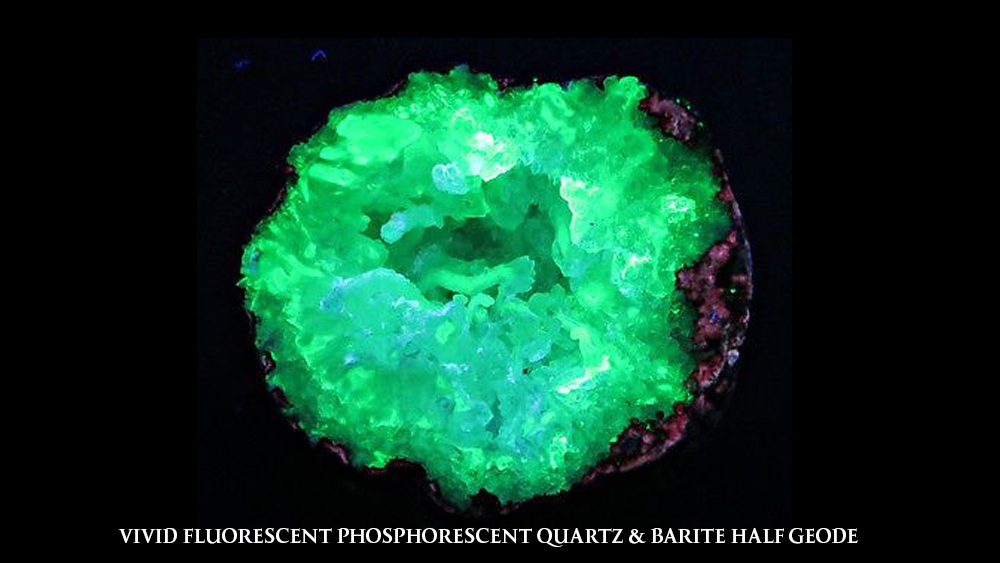 When testing a gem for fluorescence, gemologists use two different frequencies, longwave (315 to 400 nm) and shortwave (200 to 280 nm). You’ll often get different results from the different frequencies, so test both ranges. During testing, note the hue (if any), intensity (weak, moderate, strong, or inert), and if the color is evenly distributed, zoned, or patchy. Fluorescence and Gem Identification If you’ve already tested a gem’s RI and optic sign, an ultraviolet test may help you narrow the possibilities. Don’t start your gem identification process with testing fluorescence, since most mineral species have specimens that are inert to ultraviolet. However, if one of your candidates shows green or orange, weak or strong, this is useful information. Ultraviolet testing is easy to conduct, though it poses some health risks, too. See “Ultraviolet Testing and Gemstone Identification” for more information. Fluorescence and Gem Grading Fluorescence can play a crucial role in gem grading. For example, diamonds fluoresce a variety of hues and at different strengths. Since sunlight contains plenty of UV, it’ll often affect their appearance. However, since 2008, the quality for diamond color grading is daylight-equivalent lighting with a UV component, so diamond color grades assigned since then should already account for the fluorescence factor. Burma rubies also are known for intense red fluorescence. This gem literally glows in the sunlight. In addition, oils used as fillers in emeralds and other gems often fluoresce. Checking for fluorescence may be a great way to detect this treatment since these fillers are nearly invisible in normal light.
When testing a gem for fluorescence, gemologists use two different frequencies, longwave (315 to 400 nm) and shortwave (200 to 280 nm). You’ll often get different results from the different frequencies, so test both ranges. During testing, note the hue (if any), intensity (weak, moderate, strong, or inert), and if the color is evenly distributed, zoned, or patchy. Fluorescence and Gem Identification If you’ve already tested a gem’s RI and optic sign, an ultraviolet test may help you narrow the possibilities. Don’t start your gem identification process with testing fluorescence, since most mineral species have specimens that are inert to ultraviolet. However, if one of your candidates shows green or orange, weak or strong, this is useful information. Ultraviolet testing is easy to conduct, though it poses some health risks, too. See “Ultraviolet Testing and Gemstone Identification” for more information. Fluorescence and Gem Grading Fluorescence can play a crucial role in gem grading. For example, diamonds fluoresce a variety of hues and at different strengths. Since sunlight contains plenty of UV, it’ll often affect their appearance. However, since 2008, the quality for diamond color grading is daylight-equivalent lighting with a UV component, so diamond color grades assigned since then should already account for the fluorescence factor. Burma rubies also are known for intense red fluorescence. This gem literally glows in the sunlight. In addition, oils used as fillers in emeralds and other gems often fluoresce. Checking for fluorescence may be a great way to detect this treatment since these fillers are nearly invisible in normal light.
Phenomenal Effects
Light does some wondrous things inside special gems. It can create stars and cat’s eyes, billowing clouds, and intense multicolored reflections. These special optical effects are why we cherish moonstones, pearls, opals, sunstones, alexandrites, labradorites, and other phenomenal gems.
Article Composed by : සම්පත් සමරසේකර Sampath Samarasekara Chairman: Gemological Institute of Ceylon Chairman: Youth Gem Professionals Association Chairman: Sampath Gems Director: Ceylon Sapphire Gems and Jewels Director: Ceylon Gem Fair International Chairman: Nanosoft Web Develop Company Direct WhatsApp: https://wa.me/message/2A4AUALYVQWRA1
Join with Gemological Institute of Ceylon for Practical Gemology Studies Facebook Page: https://www.facebook.com/giceylon Facebook Group : https://www.facebook.com/groups/1990653001208203 Facebook Profile : GI Ceylon
Websites : www.giceylon.com www.bluesapphire.lk www.gemluck.com www.buyroughgems.com www.ceylongemfair.com Join with Gem and Jewellery Business Help and Discussion Group on Telegram : https://t.me/joinchat/Q5cLnxilNw4xAr8T3TumfA
[learn_press_profile]
